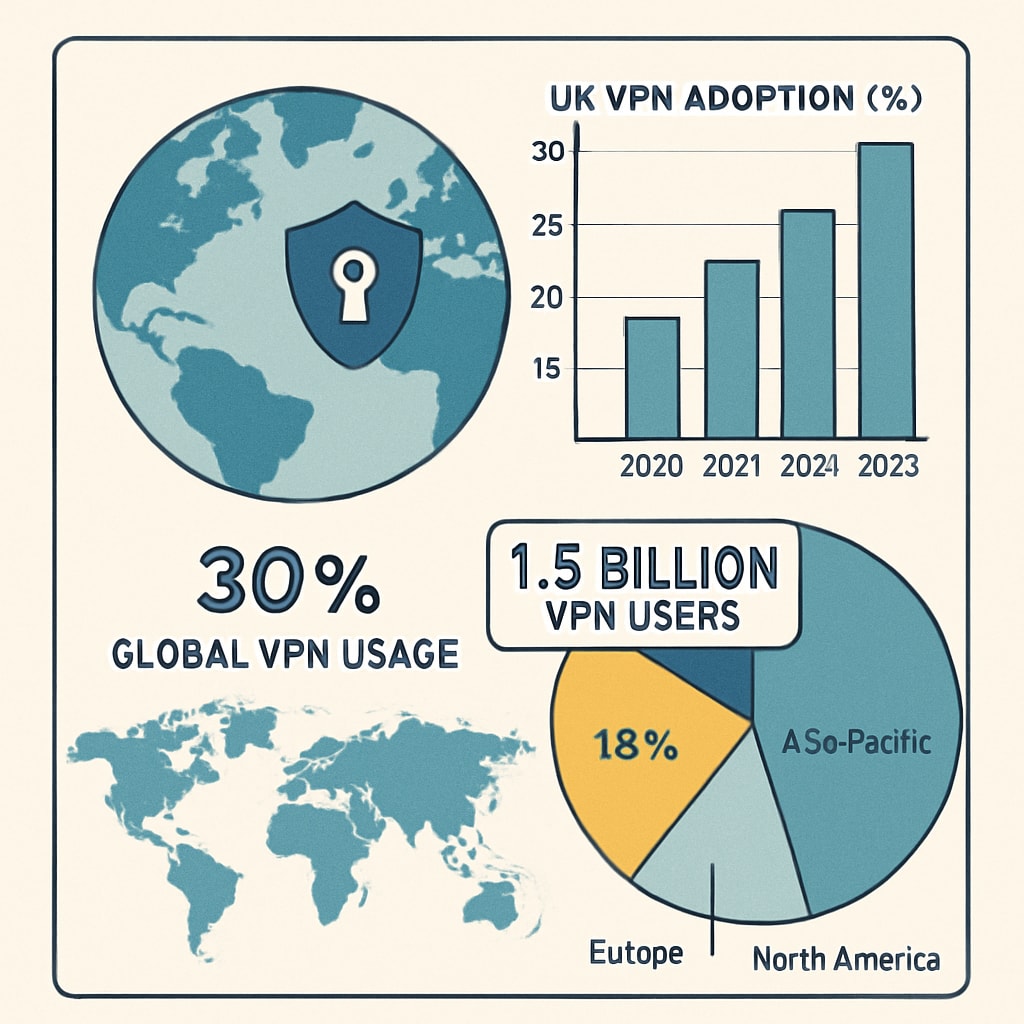The UK’s introduction of an age verification law for accessing adult content has sparked significant changes in online behavior. Among these, the increasing adoption of Virtual Private Networks (VPNs) stands out as a profound shift. By requiring users to confirm their age before accessing explicit material, the law aims to protect minors but has simultaneously raised concerns about privacy and accessibility. This article examines how the UK’s age verification law drives VPN usage, its implications for digital rights, and the broader consequences for the online ecosystem.
Understanding the UK’s Age Verification Law
The age verification law, introduced as part of the UK’s Online Safety Bill, mandates that users prove their age before accessing adult content online. The goal is to shield underage individuals from explicit materials through measures like ID verification or credit card checks. However, critics argue that these methods compromise user privacy and create data security vulnerabilities. For example, requiring personal information increases the risk of sensitive data being leaked or misused.
As a result, many users have turned to VPNs—a technology that encrypts internet traffic and masks a user’s location—to bypass these requirements. With a VPN, users can access restricted content without sharing personal information, effectively sidestepping the law’s intended purpose.

Why VPN Usage Is Rising
Several factors contribute to the growing VPN adoption in response to the UK’s age verification law:
- Privacy Concerns: Users are wary of sharing sensitive data with websites or third-party verification services.
- Access Issues: Some individuals find the verification process cumbersome or intrusive, prompting them to seek alternative methods like VPNs.
- Global Access: VPNs allow users to connect to servers in other countries where the law doesn’t apply, bypassing restrictions entirely.
These motivations highlight a fundamental tension between regulatory efforts to promote safety and individuals’ desire to maintain their online privacy and freedom.
The Broader Implications of VPN Proliferation
While VPNs offer a solution for bypassing age verification, their rising usage has broader implications:
- Impact on Regulation: The widespread use of VPNs undermines the efficacy of the age verification law, making it harder for authorities to enforce compliance.
- Digital Inequities: Not everyone has the technical knowledge or resources to use a VPN, potentially creating unequal access to online content.
- Market Growth: The VPN industry is experiencing a significant boost, with providers reporting increased downloads and subscriptions in the UK.
It’s worth noting that while VPNs enhance privacy, they are not without risks. Free VPN services, for instance, may log user data, introducing new vulnerabilities. Therefore, users must carefully evaluate their choice of VPN provider.

A Complex Balancing Act
The UK’s age verification law reflects a genuine effort to protect minors from inappropriate content. However, its unintended consequences—such as the rise in VPN usage—highlight the challenges of regulating the internet in a way that balances safety, privacy, and accessibility. Policymakers must consider these dynamics when crafting future legislation.
For example, more privacy-conscious solutions, such as age verification systems that don’t store personal data, could help address concerns. Additionally, public education about online privacy tools like VPNs may empower individuals to make informed decisions about their digital rights and security.
As the UK continues to refine its online safety regulations, the interplay between technology, privacy, and policy is likely to remain a critical area of focus.
Readability guidance: This article uses short paragraphs, active voice, and clear transitions to ensure accessibility. Key points are summarized in lists for ease of reading, and overuse of technical jargon is avoided to maintain clarity.


